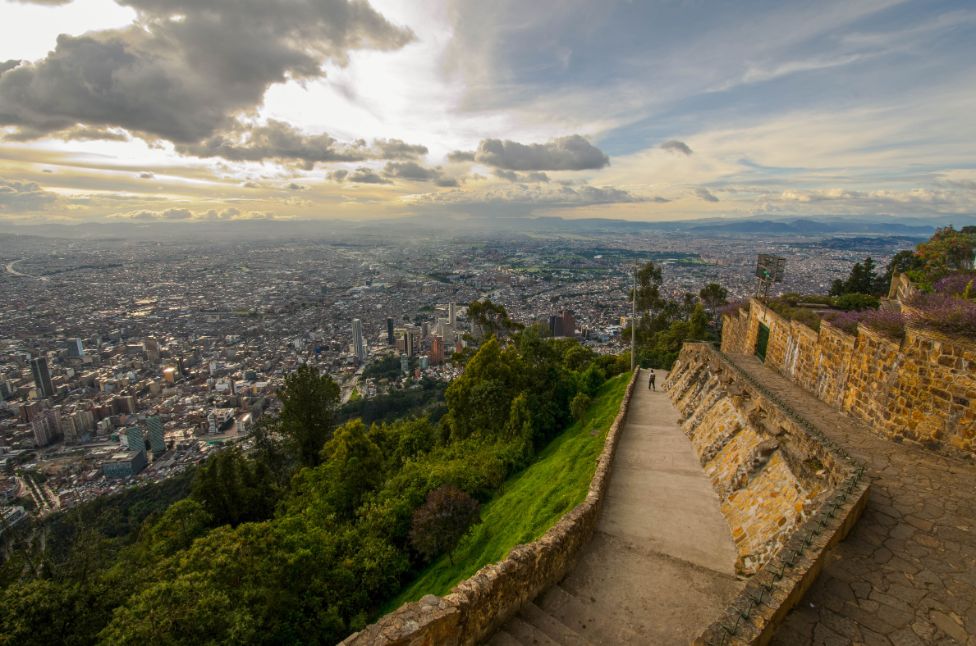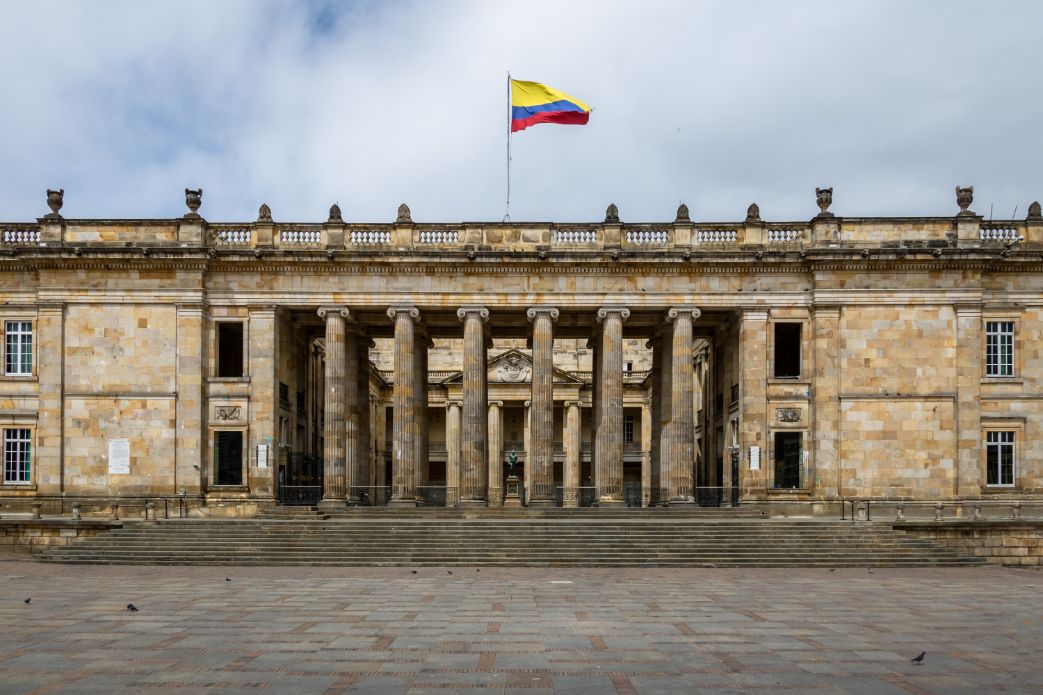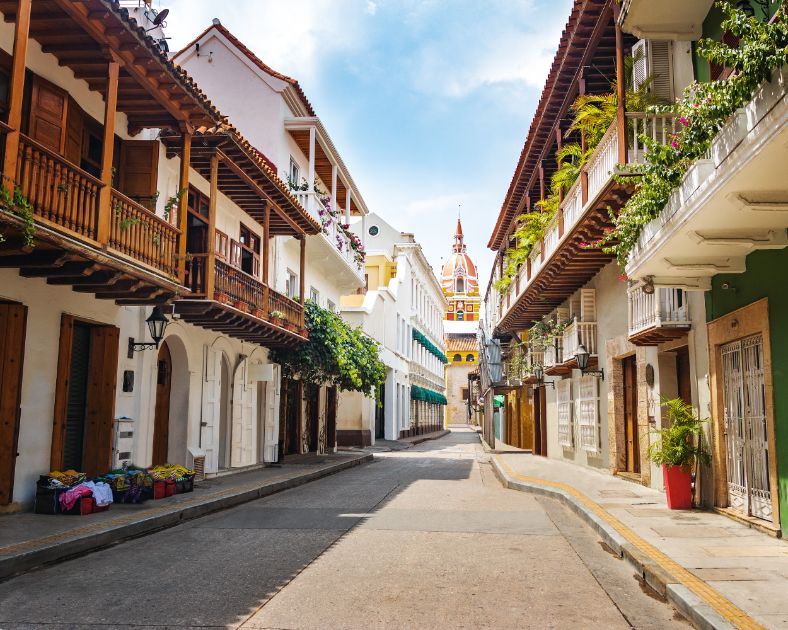Last Updated on March 2, 2024
Colombia is one of the most biodiverse nations on the planet. The country has the highest number of bird and orchid species. It also ranks second in terms of the diversity of plants, freshwater fishes, amphibians, and butterflies.
If these facts are not enough to pique your curiosity in Colombia, then the following might. Read on as we explore over 70 interesting and unusual Colombia facts that you might not already know about.
Geographical Facts
Location by Continent
1. Colombia is located in South America. It’s part of the 12 sovereign countries on the continent. Others include Brazil, Argentina, Chile, Bolivia, Venezuela, Uruguay, Peru, Guyana, Paraguay, Ecuador, and Suriname.
Location by Region
2. Colombia is located northwest of South America. However, some of the country’s territories fall within the Central America boundaries.
3. The region where much of Colombia is located is known as the Caribbean South America.

Location in Relation to the Equator
4. Colombia is situated slightly north of the equator. The country’s mainland sits at a latitude and longitude of 4.5709° N and a longitude of 74.2973° W, respectively.
Absolute Size
5. Colombia has a total surface area of 440,831 square miles (sq. mi.) or 1,141,748 square kilometers (km2).
6. Continental space accounts for 91.2% of Colombia’s surface area while water bodies take up the remaining 8.8%.
7. Colombia has a land frontier of 3,920 miles or 6,309 kilometers and a relatively smaller coastline, at 2,050 miles or 3,300 kilometers.
8. Colombia is shaped like an odd pear with a relatively thin top.
9. The country has a longer north-north-west to south-south-east distance of 1,060 miles or 1,700 kilometers, compared to its north-north-east to south-south-west distance of 750 miles or 1,210 kilometers.
Relative Size
10. With its total surface area of 440,831 square miles, Colombia ranks the 4th largest country in South America, coming after Brazil, Argentina, and Peru.
11. Worldwide, Colombia is the 25th largest country. It’s nestled between South Africa and Ethiopia in terms of geographical size.
Bordering Countries
12. Colombia shares continental borders with Panama to the northwest, Brazil and Venezuela to the east, and Ecuador and Peru to the south. The country also shares maritime borders with Costa Rica, Honduras, Nicaragua, Jamaica, Haiti, and the Dominican Republic.
Bordering Water Bodies
13. Colombia is bordered to the north by the Caribbean Sea and to the west by the Pacific Ocean. The country also has a coastline on the Atlantic Ocean.
14. A larger part of Colombia’s coastline sits along the Caribbean Sea.
Islands
15. Colombia has a total of 74 islands, most of which are situated off the Caribbean coast.
16. The vast majority of Colombia’s islands (up to 30) are found in the Rosario archipelago.
Etymological Facts
17. Colombia was named after renowned Italian navigator Christopher Columbus.
18. The name “Colombia” was formally adopted for the country in 1819.

19. Colombia is just one of the numerous places on earth named after Christopher Columbus. In the United States alone, more than 20 places pay tribute to the legendary Italian navigator. A notable mention is the District of Columbia.
20. Despite Colombia’s name paying tribute to Christopher Columbus, the Italian navigator never set foot in the country. Colombia was discovered by Columbus’ companion Alonso de Ojeda who arrived in the country at Cabo de la Vela from nearby Santa Domingo.
Physical Features and Landmarks
21. Pico Cristobal Colon is the highest point in Colombia. It towers to an elevation of 18, 947 feet or 5,775 meters above sea level.
22. On the other hand, the lowest point in Colombia is the Pacific Ocean situated at 0 feet (0 meters) above sea level.
23. Magdalena River, less commonly known as Rio Grande de la Magdalena, is the longest river in Colombia. The river flows northwards through the western half of the country, covering a total distance of 949 miles or 1,528 kilometers.
24. The Caño Cristales River found in Colombia’s Serranìa de la Macarena National Park is widely considered the most colorful river in the world. That’s because it appears in hues of different colors depending on the prevalent light and water conditions. Caño Cristales can take on various hues, including bright green, red, yellow, purple, blue, orange, deep maroon and hot pink. No wonder the river is dubbed “the river of five colors,” “the melted rainbow,” or “the liquid rainbow.”
25. Lake Tota is the largest lake in Colombia. The lake is located in the Sugamuxi Province and is the source of the Upia River. It measures 21 sq mi or 55 sq km.
26. Colombia boasts over 20 enchanting beaches.
27. Playa Blanca, also known as White Beach, is Colombia’s most famous beach. It’s located in the Magdalena Medio region, near La Guajira and El Quindio.
28. The La Guajira Desert located in northern Colombia is the country’s most extensive desert. It covers most of the La Guajira Peninsula and extends 680 miles or 1,100 kilometers north of the capital Bogotá.
29. The Tatacoa Desert, which is the second largest desert in Colombia, is the country’s most beautiful arid landscape. Aptly named The Red Desert of Tatacoa, the Tatacoa Desert especially stands out for its reddish color that’s attributable to its high content of the mineral iron.
30. Altiplano Cundiboyacense is Colombia’s most famous plateaus. It’s located in the Eastern Cordillera regions of the Colombian Andes and extends to parts of the departments of Cundinamarca and Boyacá.
31. The Cocora Valley is the biggest valley in Colombia. It’s home to lush green hills and the world’s tallest palm trees.
32. Colombia has over three hundred caves. Most of these are located in Antioquia, Santander, Boyacá, Huila, and Tolima.
33. La Cueva del Esplendor, Mina de Sal de Nemocon, Caja de Agua, Morgan’s Cave, and Cueva del Nitro, are Colombia’s five most famous caves and a must-visit for foreign tourists.
34. Serranía de Chiribiquete, found in Colombia, is the largest tropical rainforest national park in the world.
35. Colombia is the world’s second-most biodiverse country after Brazil. The country is especially noted for its unique bird and orchid species.
Historical Facts

36. Colombia is at least 2,000 years old. Archaeological findings uncovered over the years indicate that humans may have inhabited present-day Colombia since the 5th century BC.
37. The Chibchas were the first human population to inhabit present-day Colombia. Also known as Muisca, this group comprised South American Indians who occupied much of the Americas during the Spanish conquest.
38. The Aztecs, Mayans, and Incas are the three most notable pre-Colombian civilizations. All three civilizations existed long before Christopher Columbus reportedly discovered ‘The New World.’
39. Although humans have inhabited Colombia from pre-historic times, the country is slightly over two centuries old. Colombia gained independence on July 20, 1810, marking the end of a long Spanish rule.
40. Colombia was under Spanish rule for close to three centuries. Spain began its conquest of the country in 1525.
41. Colombia was the first South American country to declare independence. The last is Suriname, which declared independence from the Netherlands on November 25, 1975.
42. French Guiana is the only South American country still under European colonies. The country remains a colony of France following the exit of the Brits and the Dutch.
43. General Simón Bolívar was the first president of the Republic of Colombia. He assumed office in 1819.
44. Colombia was officially recognized by the United States in 1822, more than a decade after the country gained independence.
45. Colombia has gone by numerous names over the years. At the time of independence, the country was known as The Federation of Columbia. The Colombian federation included territories occupied by the present-day republics of Colombia, Panama, Venezuela, and Ecuador. From 1830 to 1856, Colombia was called New Grenada. It then became known as The Grenadine Confederation between 1856 and 1863, before changing its name yet again to the United States of Colombia. Colombia became officially known as The Republic of Colombia in 1886.
Towns and Cities

46. Bogotá is Colombia’s capital and largest city. It’s also the country’s most populous city, with a population of 7.181 million as of 2018.
47. Medellín, Cali, Barranquilla, and Cartagena sum up Colombia’s top five largest cities by urbanization and population.
48. Medellín is the safest of Colombia’s major cities. Crime rates here are much lower than in the capital Bogotá, especially during the day.
49. Santa Marta, located north of Colombia, is the country’s oldest city. The city was established on July 29, 1525, by Spanish conqueror Rodrigo de Bastidas.
50. Guatapé town, located in the Department of Antioquia, is the most beautiful town in Colombia. The resort town is famed for houses embellished in fancy bas-reliefs.
51. BD Bacatá Torre Sur is an architectural complex currently under construction in Bogotá and features the tallest building in Colombia. It stands at a towering height of 709 feet or 216 meters.
52. Casa de la Aduana is Colombia’s oldest building. The building houses the Gold Museum.
53. Cathedral Santa Marta is the oldest standing church in Colombia and the entire continental America. It’s here that the heart of renowned Venezuelan military and political leader Simón José Antonio de la Santísima Trinidad Bolívar y Palacios was initially buried.
Demographic Facts
54. Colombia is the 28th most populous country in the world, with a population of 51.52 million people as at 2022.
55. In the Americas, Colombia is the 4th most populous country after the United States, Brazil, and Mexico.
56. In South America, Colombia comes second in population only after Brazil (that’s if you consider that Mexico is located in Central and not South America).
57. The vast majority of Colombians live in cities and towns, most of which happen to be concentrated in the mountainous interior.
Cultural Facts

Colombian Languages
58. There are 69 officially identified native languages in Colombia. That makes the country one of South America’s most culturally diverse.
59. The 69 Colombian languages fall into five distinct groups. They include the Spanish language, 65 Amerindian languages, 2 Creole languages, the Romani language, and the Portuguese language.
60. Spanish is the most popular language in Colombia. It’s spoken by over 99.5% of the population.
61. Colombia has the highest percentage of Spanish speakers in South America. However, Mexico takes the first spot in terms of the total number of Spanish speakers in a country.
62. San Andrés, Providencia, and Santa Catalina Islands account for more than 90% of Colombia’s English-speaking territories.
Colombian Ethnicities
63. Many Colombians trace their ethnic origin to the Western Asian countries of Lebanon, Syria, Jordan, and Palestine.
64. There are over 3.5 Arab Colombians.
65. In terms of major ethnic distribution, the majority of Colombians (up to 87.58%) comprise White-Mestizo Colombians. Afro-Colombians make up 6.68%, Indigenous Colombians 4.31%, and the rest are not ethnically-identified.
Colombian Religions
66. Christianity is the most dominant religion in Colombia, with up to 95.5% of the country’s citizens subscribing to the faith as of 2020. The majority of the rest are not religiously affiliated.
67. Colombia has the second-highest percentage of Christians in South America after Paraguay with 96.9%.
68. Catholicism is the most dominant Christian denomination in Colombia. More than 87% of the country’s Christians identify as Catholics.
Colombian Cuisine
69. The bandeja paisa is the national dish of Colombia. It consists of steak, pork rinds, sausages, ground beef, beans, plantains, a fried egg, and a fried dough patty.
70. Colombia is the world’s third biggest coffee exporter after Brazil and Vietnam. Expectedly, caffeinated drinks are commonplace in the country.
71. Colombians love tropical fruits too. Unripe mangoes are a special favorite.
72. Colombia’s cuisine is high in meat and relatively low in plant-based products.
73. Much of Colombia’s cuisine, just like its religion, has Spanish footprints all over it.
Final Word
Despite its charm and attraction, Colombia has often been ranked among South America’s most insecure countries. Assault and robbery incidences are commonplace, especially in selected hotspots in large cities like the capital Bogotá.
So, you’d do well to exercise due caution even as you explore the country’s scenic beauty.

